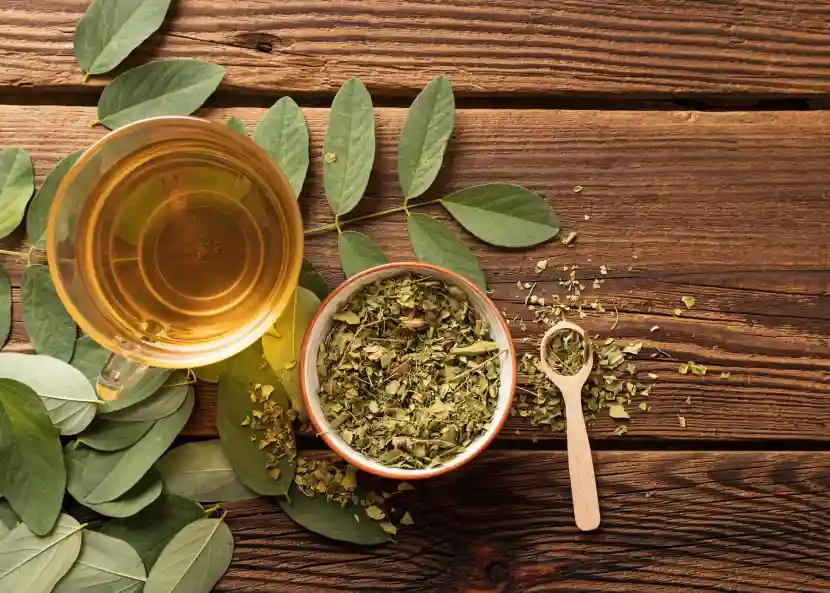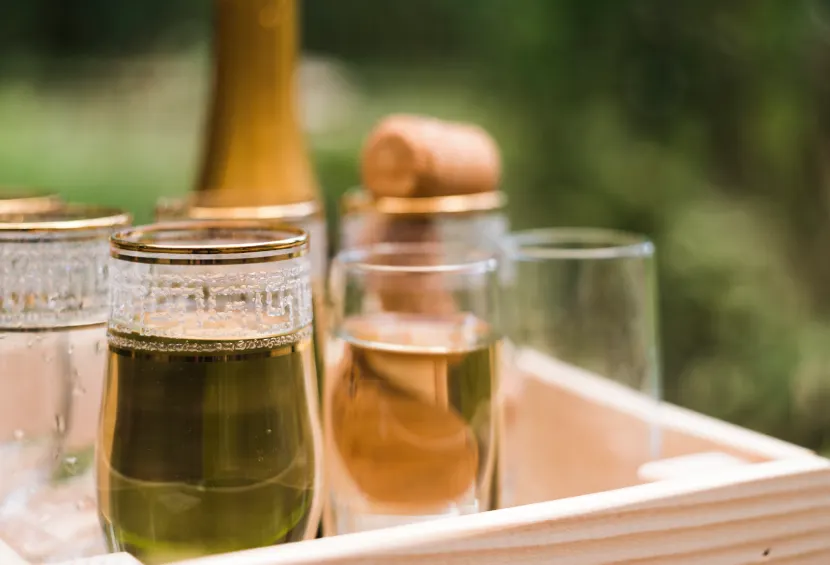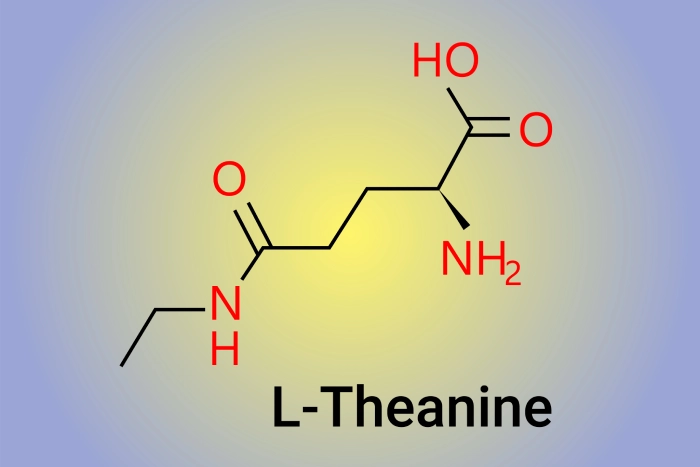What is Vine Tea?
Origin and History
Scientifically known as Ampelopsis grossedentata, vine tea has been used in Chinese medicine for centuries. The plant is native to southern China, particularly in the mountainous regions of Guangxi and Hunan provinces. While its name might suggest a connection to grape vines, it actually comes from a different plant species altogether, though they belong to the same family (Vitaceae).
The use of vine tea can be traced back to the Ming Dynasty, where it was documented in traditional Chinese medical texts for its various health-promoting properties. Local communities have long harvested the tender leaves and stems of this climbing vine to create their traditional herbal preparations.
Traditional Uses in Different Cultures
While vine tea has its roots deeply embedded in Chinese culture, its influence has gradually spread to other Asian countries. The traditional preparation methods vary across different regions, with some areas focusing on its refreshing qualities while others emphasize its potential health benefits.

Understanding the Composition of Vine Tea
Key Active Compounds
The remarkable properties of this herbal beverage are attributed to its rich phytochemical profile. The most notable compound found in the leaves is dihydromyricetin (DHM), also known as ampelopsin. This flavonoid compound has been the subject of numerous scientific studies due to its potential biological activities.
Other beneficial compounds present include:
- Various flavonoids and polyphenols
- Antioxidant compounds
- Essential minerals and trace elements
Nutritional Profile
This herbal infusion is naturally caffeine-free and contains minimal calories, making it an excellent alternative to traditional caffeinated beverages. The leaves are rich in antioxidants and contain various micronutrients, though specific concentrations can vary depending on growing conditions and processing methods.
How Vine Tea is Produced
Cultivation Methods
The cultivation of these plants requires specific environmental conditions to thrive. They prefer well-draining soil and partial shade, typically growing at elevations between 200 and 1,500 meters. Traditional farmers often use sustainable farming practices to maintain the quality and preserve the natural ecosystem.
Processing Techniques
The processing involves several careful steps:
- Harvesting: Young leaves and tender stems are typically harvested in spring and early summer
- Withering: The fresh leaves are allowed to wilt under controlled conditions
- Drying: The leaves are dried using traditional methods or modern technology
- Sorting and grading: The final product is sorted based on quality standards
For those interested in trying different variations, grape vine tea is also available in some markets, though it’s important to note this is a distinct product made from actual grape vine leaves rather than the traditional variety we’re discussing.
This meticulous process ensures the preservation of the active compounds while creating a product that delivers both therapeutic potential and pleasant taste. The resulting brew offers a unique flavor profile that combines subtle sweetness with gentle herbal notes.
The Science Behind Vine Tea’s Health Benefits
Research-Backed Benefits
Recent scientific studies have shown promising results regarding the potential health benefits of vine tea. Research has particularly focused on its antioxidant properties and metabolic effects. The primary compound, dihydromyricetin (DHM), has been studied for its various biological activities.
Several clinical studies suggest that vine tea may support:
- Metabolic health through improved glucose metabolism
- Cellular protection through antioxidant activity
- Healthy inflammatory response
- Liver health support
Ongoing Studies
Current research continues to explore new potential applications. Scientists are particularly interested in understanding how the compounds in vine tea interact with various biological pathways. While many studies show promise, it’s important to note that research is ongoing, and more human clinical trials are needed to fully understand its effects.
Different Types of Vine Tea Products
Traditional Grape Vine Tea Varieties
While discussing varieties, it’s important to distinguish between traditional vine tea and grape vine tea. The latter is made from actual grape vine leaves and has its own distinct properties and traditional uses. Both varieties have their unique characteristics and potential benefits, though they come from different plant species.
Modern Formulations
Today’s market offers various formulations of vine tea, including:
- Loose leaf preparations
- Tea bags for convenient brewing
- Concentrated extracts
- Supplement forms containing standardized extracts
Each formulation maintains different levels of active compounds, and the choice largely depends on personal preference and intended use.
Optimal Ways to Prepare and Consume Vine Tea
Brewing Methods
To maximize the benefits of vine tea, proper preparation is essential. The traditional method involves:
- Water Temperature: Use water heated to about 185°F (85°C)
- Steeping Time: 3-5 minutes for optimal extraction
- Leaf-to-Water Ratio: Approximately 1-2 teaspoons per cup
For cold brewing, steep the leaves in room temperature water for 6-8 hours. This method can result in a smoother taste profile while preserving the beneficial compounds.
Recommended Dosage
While vine tea is generally considered safe for regular consumption, it’s important to start with a moderate amount to assess individual tolerance. Traditional practitioners typically recommend:
- 1-2 cups daily for general wellness
- Best consumed between meals
- Evening consumption should be mindful of individual sensitivity
Who Should Consider Taking Vine Tea?
Target Demographics
This herbal beverage may be particularly suitable for:
- Adults looking for caffeine-free alternatives
- Those interested in traditional herbal preparations
- Individuals focusing on metabolic health
- People seeking antioxidant-rich beverages
Health Conditions
While vine tea shows promise for various health applications, it’s crucial to consult healthcare providers before using it for any specific health condition. This is particularly important for:
- Those taking medications
- Individuals with existing health conditions
- Pregnant or nursing women
- People with known herb sensitivities
Potential Side Effects and Precautions
Known Contraindications
While this traditional herbal preparation generally demonstrates a favorable safety profile, understanding potential contraindications remains crucial for safe consumption. Laboratory studies have indicated minimal adverse effects when consumed in moderate amounts, though individual responses may vary. Healthcare practitioners particularly emphasize caution during pregnancy and lactation, recommending thorough consultation before incorporating any new herbal supplements into daily routines.
Drug Interactions
The active compounds present in this herbal preparation, particularly dihydromyricetin, may interact with certain medications. Research suggests potential interactions with blood-thinning medications and drugs metabolized by specific liver enzymes. Medical professionals emphasize the importance of disclosing all supplement use during healthcare consultations, as even natural products can significantly impact medication effectiveness.
Quality Considerations When Buying Vine Tea
Authentication Methods
The increasing global demand for traditional herbal products has unfortunately led to varying quality standards in the market. Authentic vine tea products should come with detailed sourcing information and proper botanical identification. Leading manufacturers typically provide certificates of analysis and employ standardized testing methods to ensure consistent levels of active compounds, particularly dihydromyricetin.
Storage Requirements
Proper storage significantly impacts the preservation of beneficial compounds. The dried leaves should be kept in airtight containers, protected from direct sunlight and moisture. Environmental factors such as temperature fluctuations and humidity can accelerate degradation of active compounds. Quality suppliers often provide specific storage guidelines to maintain product integrity throughout its shelf life.

Comparing Vine Tea with Other Herbal Teas
Unique Properties
Among traditional herbal infusions, this preparation stands out for its unique phytochemical profile. While green tea offers catechins and chamomile provides terpenoids, vine tea’s primary compound, dihydromyricetin, presents distinct biological activities. Some consumers particularly appreciate grape vine tea as an alternative, though it offers a different nutritional profile and traditional use pattern.
Cost-Benefit Analysis
When evaluating the investment in premium herbal products, several factors merit consideration. High-quality preparations typically command higher prices due to careful cultivation practices, proper processing methods, and quality control measures. However, the concentration of active compounds and overall product integrity often justify the premium pricing for those seeking authentic traditional preparations.
Expert Tips for Maximum Benefits
Timing Recommendations
Traditional wisdom and modern research suggest optimal timing for herbal consumption. Morning or early afternoon consumption typically aligns well with natural body rhythms. Some practitioners recommend avoiding consumption close to bedtime, though individual responses vary. The beneficial compounds appear to be better absorbed when consumed between meals, allowing for optimal interaction with biological processes.
Lifestyle Integration
Successfully incorporating herbal preparations into daily routines requires thoughtful planning. Creating consistent brewing rituals can enhance the overall experience while ensuring regular consumption. Some enthusiasts combine their daily preparation with mindfulness practices, turning it into a moment of peaceful reflection amidst busy schedules.
Frequently Asked Questions About Vine Tea
Many consumers express curiosity about incorporating herbal preparations into their daily routines. Common inquiries often center around preparation methods, storage, and potential benefits. Here are evidence-based answers to frequently asked questions:
Q: How many cups can be safely consumed daily?
A: Traditional practices suggest 1-3 cups daily is generally well-tolerated, though individual responses may vary. Starting with one cup and gradually increasing allows for better understanding of personal tolerance.
Q: Can it be combined with other herbal preparations?
A: While combinations are possible, consulting healthcare providers remains crucial, particularly when mixing multiple herbal products. Some practitioners recommend trying single herbs initially to better understand individual responses.
Q: How long does properly stored product remain effective?
A: When stored correctly in airtight containers away from light and moisture, dried leaves typically maintain their properties for up to two years. However, optimal benefits come from consuming within one year of production.
Q: What distinguishes high-quality vine tea from lower-grade products?
A: Premium products typically feature younger leaves, consistent color, clean aroma, and standardized levels of active compounds. Reputable suppliers provide detailed sourcing information and quality testing certificates.
Expert Tips for Maximum Benefits
The art of preparation significantly influences the overall experience and potential benefits of herbal infusions. Traditional practitioners emphasize several key aspects for optimal results:
- Water quality plays a crucial role; filtered water often yields better results
- Consistent brewing times help maintain reproducible experiences
- Regular consumption patterns may enhance potential benefits
- Mindful preparation rituals can enhance the overall experience
Conclusion
Modern scientific investigation continues to unveil the potential of traditional herbal preparations. While research supports various traditional uses of vine tea, maintaining a balanced perspective remains crucial. The growing interest in grape vine tea and other herbal alternatives reflects increasing consumer awareness of traditional practices.
For those considering incorporating these preparations into their wellness routines, several key points merit consideration:
Understanding proper preparation methods ensures optimal extraction of beneficial compounds. Quality sourcing from reputable suppliers safeguards against potential adulterations. Regular consultation with healthcare providers ensures safe integration with existing health practices.
The intersection of traditional wisdom and modern scientific validation continues to expand our understanding of herbal preparations. As research progresses, maintaining an evidence-based approach while respecting traditional knowledge helps optimize potential benefits while ensuring safety.
Remember that individual responses vary, and what works well for one person may not suit another. Starting gradually and paying attention to personal responses helps develop an optimal consumption pattern. Whether seeking specific health benefits or simply enjoying the cultural aspects of traditional preparations, informed consumption supports better outcomes.



